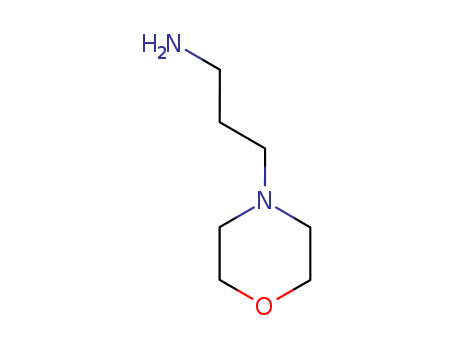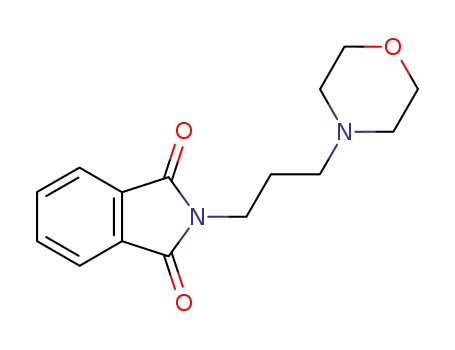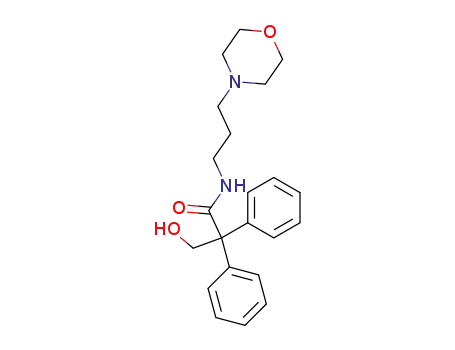

Product Details
| Product Name | 3-Morpholinopropylamine |
| Alias | 4-(3-Aminopropyl)morpholine;4-Morpholinepropanamine;3-(4-Morpholinyl)-1-propanamine |
| English | |
| Molecular formula | C7H16N2O |
| Molecular weight | 144.21 |
| CAS No | 123-00-2 |
| EINECS | |
| Specification | Assay≥99% Moisture < 0.3 color < 30APHA |
| Appearance traits | |
| Use | Polyurethane catalyst. |
| Package | 180kg/drum |
| Other product information | Properties: Appearance:Colorless liquid Melting point:−15 °C Boiling point:224 °C Density:0.987 g/ml at 25 °C Refractive index:N20/D 1.4761 Flash(ing) point :210 °F Sensitiveness:Air sensitive Water soluble properties:Soluble |
|
Air & Water Reactions |
Soluble in water. |
|
Reactivity Profile |
N-(3-Aminopropyl)morpholine behaves as an amine. Amines are chemical bases. They neutralize acids to form salts plus water. These acid-base reactions are exothermic. The amount of heat that is evolved per mole of amine in a neutralization is largely independent of the strength of the amine as a base. Amines may be incompatible with isocyanates, halogenated organics, peroxides, phenols (acidic), epoxides, anhydrides, and acid halides. Flammable gaseous hydrogen is generated by amines in combination with strong reducing agents, such as hydrides. |
|
Hazard |
Strongly irritant to tissue. |
|
Health Hazard |
TOXIC; inhalation, ingestion or skin contact with material may cause severe injury or death. Contact with molten substance may cause severe burns to skin and eyes. Avoid any skin contact. Effects of contact or inhalation may be delayed. Fire may produce irritating, corrosive and/or toxic gases. Runoff from fire control or dilution water may be corrosive and/or toxic and cause pollution. |
|
Fire Hazard |
Non-combustible, substance itself does not burn but may decompose upon heating to produce corrosive and/or toxic fumes. Some are oxidizers and may ignite combustibles (wood, paper, oil, clothing, etc.). Contact with metals may evolve flammable hydrogen gas. Containers may explode when heated. |
|
Safety Profile |
A corrosive material. Moderately toxic by several routes. A severe skin and eye irritant. Combustible. Can react with oxidizing materials. To fight fire, use alcohol foam, dry chemical. When heated to decomposition it emits toxic fumes of NOx,. |
|
Definition |
ChEBI: A member of the class of morpholines that is morpholine substituted by a 3-aminopropyl group a the N atom. |
|
General Description |
A colorless liquid with a faint, fishlike odor. Burns, but requires some effort to ignite. Corrosive to tissue. Produces toxic oxides of nitrogen during combustion. |
InChI:InChI=1/C7H16N2O/c1-2-7(8)9-3-5-10-6-4-9/h7H,2-6,8H2,1H3
Our main markets are China, the United States, Europe, Korea, and Japan. The main business scope includes electronic chemicals, liquid crystal intermediates, high-purity metal compounds, pharmaceutical intermediates, special chemicals, and so on.
A new asymmetrical 1,1-dioxidothiomorpho...
Cdc2-like kinase 1 (CLK1) and dual speci...
In this study, the carbamate structure o...
A two-photon fluorescent probe for detec...

3-Morpholin-4-yl-propionitrile


morpholine


4-(3-Aminopropyl)morpholine
| Conditions | Yield |
|---|---|
|
With sodium tetrahydroborate; hydrogen; nickel dichloride; In tert-butyl alcohol; at 70 ℃; for 8h; under 760.051 Torr;
|
22% 59% |

(3-Morpholin-4-yl-propylamino)-diphenyl-methanol


4-(3-Aminopropyl)morpholine


benzophenone
| Conditions | Yield |
|---|---|
|
With water; In acetonitrile; at 30 ℃; Rate constant;
|

morpholine

N-(3-chloropropyl)phthalimide

2-(3-bromopropyl)isoindole-1,3-dione

acrylonitrile

2-(3-morpholinylpropyl)-1H-isoindole-1,3(2H)-dione

1,3,5-tris[3-(morpholin-4-yl)propyl][1,3,5]triazinane

3-(3-morpholino-propylamino)-2,2-diphenyl-propionic acid

3-hydroxy-2,2-diphenyl-propionic acid-(3-morpholino-propylamide)
CAS:1704-62-7
CAS:14433-76-2
CAS:10294-54-9
CAS:10241-05-1